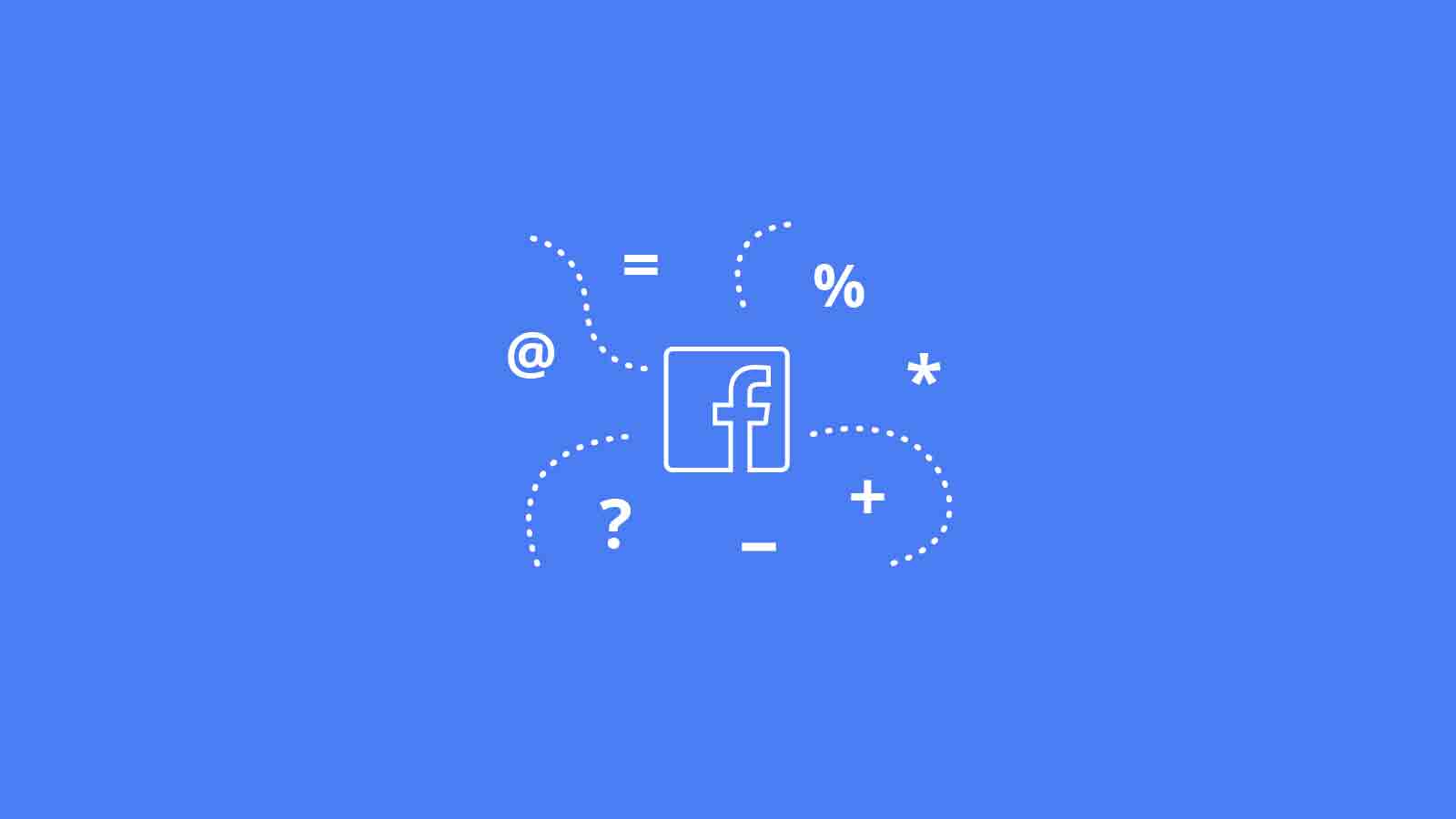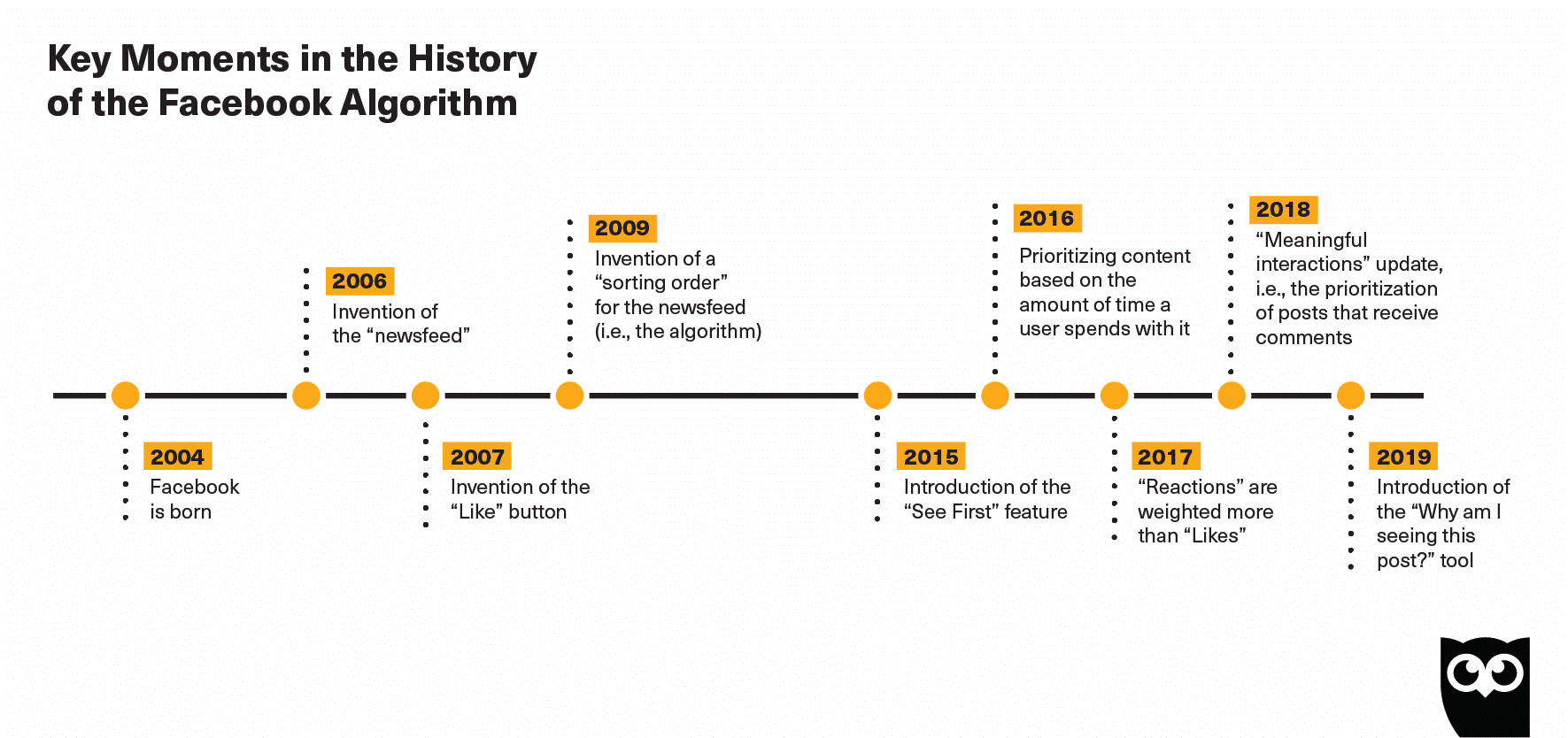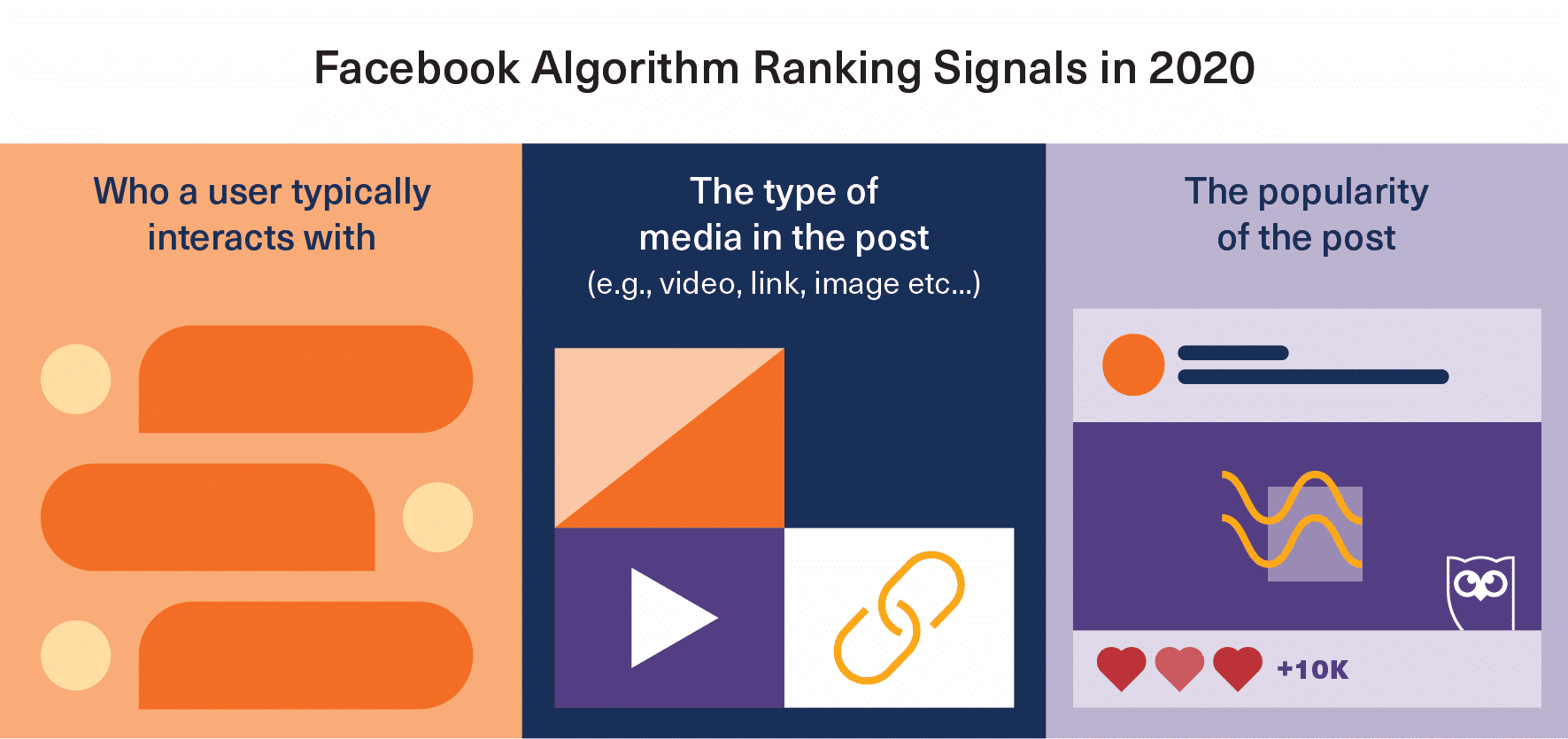Congratulations to us on reaching a new decade, which means, of course, another set of updates to the Facebook algorithm.
As of late 2019, the average reach for Fb posts was down by 2.2%, which means the brands can reasonably expect their posts to be seen by about 5.5% of their Page’s fans. Big brands with large follower counts could expect even lower averages.
Actually, The Fb algorithm is not the only thing that impacts reach—there are many others at play such as Facebook’s continued growth—however, it is definitely one of the most vital factors. This means marketers who do not keep up to date might have a tougher time getting their content in front of their audience’s eyeballs.
If you need a quick refresher, the Facebook algorithm is how Fb determines which posts users see, and in what order, every time they check their newsfeeds.
Since 2018, the algorithm has been evolving at a rapid clip, as Fb strives to make the time people spend on it more valuable and meaningful.
However, in 2020, Fb’s focus is on making its platform more clear for users and giving people more direct control over what they see. For example, Fb has conducted multiple surveys to gather data and opinions straight from users. And there’s now a button to click on if you wish to know why a post is showing up in your feed.
For brands, so what does that mean who doesn’t want to shell out to turn every single post into a Facebook ad?
Don’t fear, there’s hope. In 2020, we have collected 9 strategic tips for working with the Fb algorithm and making it work for you.
A brief history of the Facebook algorithm
2004 – 2009:
Fb was launch in 2004, however, its newsfeed did not show up till 2006. The Like button premiered in 2007, however, it’s probably safe to say that Fb did not have what we consider as “the algorithm” till 2009 when the platform debuted a new sorting order for newsfeeds based on each post’s popularity. (Goodbye, reverse-chronological order).
2009 – 2019:
A decade of further tinkering behind the curtain made the experience that billions of users now take for granted: personalized feeds made by galaxy-brain software that analyzes tens of thousands of data points to maximize the amount of time people spent on the platform. Because more screen time = more adverts seen = more money for Fb’s shareholders.
2015
For example, in 2015, Fb introduced the “See First” function to let users select which Pages they want to see at the top of their feeds. They also began downranking Pages that posted a high volume of overly promotional organic content. (i.e., organic posts with content identical to adverts.)
2016
In 2016, Fb started prioritizing posts from family and friends, as well as “entertaining” and “informative” content. It also began measuring a post’s value-bases on the amount of time users spent with it, even if they didn’t like or share it. Live video was also prioritized, because it was earning 3x as much watch time, compared to normal video.
2017
There are some large changes included weighing reactions this year (i.e., hearts or the haha face) more than likes. Additionally, they began weighing movies by completion rate.
2018
But in January 2018, Mark Zuckerberg said Fb newsfeed changes that prioritize “posts that spark conversations and meaningful interactions.” to respond in part to widespread criticism. The change was meant to improve the quality, rather than the quantity, of the time that people spend on Fb, as well as take more responsibility for how the platform affects its users’ well-being.
In the short term, brands had valid concerns about the fact that their organic content would no longer be prioritized as highly as posts from friends, family, and groups. Now, the Facebook algorithm was set to prioritize posts that got lots of high-value engagement (eg., reactions, comments, comment replies—and if a post was shared over Messenger to a friend, that counted too). In other words: to get the reach to get engagement, brands had to be earning engagement already.
2019
A year later, in March 2019, at least one study showed that while engagement had risen 50% year over year, the algorithm changes also increased divisiveness and outrage as it tended to promote posts that got users worked up. (Fox News, whose reporting evokes strong opinions from many, became the top publisher on Fb by engagement.)
The algorithm simultaneously ended up rewarding fringe content (a.k.a. fake news) from unreliable sources that knew how to handle the system.
The Fb algorithm will probably always remain a work-in-progress. So let’s look at what matters to brands who need to optimize their organic reach today.
How the Facebook algorithm works in 2020
Currently, the algorithm ranks the posts each user sees in the order that they are likely to enjoy them, based on a variety of factors, a.k.a ranking signals.
As of 2020, Fb has stated that its priority is on helping users know the algorithm, and take control of these ranking signals to provide it with better feedback.
Rating alerts are data points about a user’s past behavior, and the behavior of everybody else on the platform, too. For example: are people sharing this post with their friends? How often do you react to posts from your manager? From your mother? Do you often watch live videos? What is your favorite Group? How many posts are available for you to take a look at theoretically, right now? How new are they?
You get the idea. The algorithm weighs lots of things before it determines to show you that puma cub video.
Fb mentions three major categories of ranking signals:
- Who a user usually interacts with
- The kind of media in the post (eg., photo, video, link, and so on.)
- The popularity of the post
In March 2019, Fb launched a new tool to build more transparency and user control into the newsfeed. The “Why am I seeing this post?” button does exactly because it says: it helps people know why the algorithm has surfaced that post.
It also lets people tell the algorithm directly what’s vital—or not so vital, or downright irritating—to them. That means they could tell Fb that they need fewer posts from a specific person, or to see more from a specific Page.
Next, in May 2019, Fb started directly asking users questions, through survey, to get more context on what content matters to them. The surveys asked users:
- Who their close friends are;
- What posts (links, images and videos) they feel valuable;
- How necessary a particular Fb Group that they have joined is to them;
- How they’re in seeing content from particular Pages that they follow.
Fb used all these answers to update the algorithm with the patterns they extrapolated. For example, the Pages and Groups that people identified as most meaningful were usually the ones that they’d followed for a long time, the ones they interact with usually, and the ones that had lots of posts and activity.



